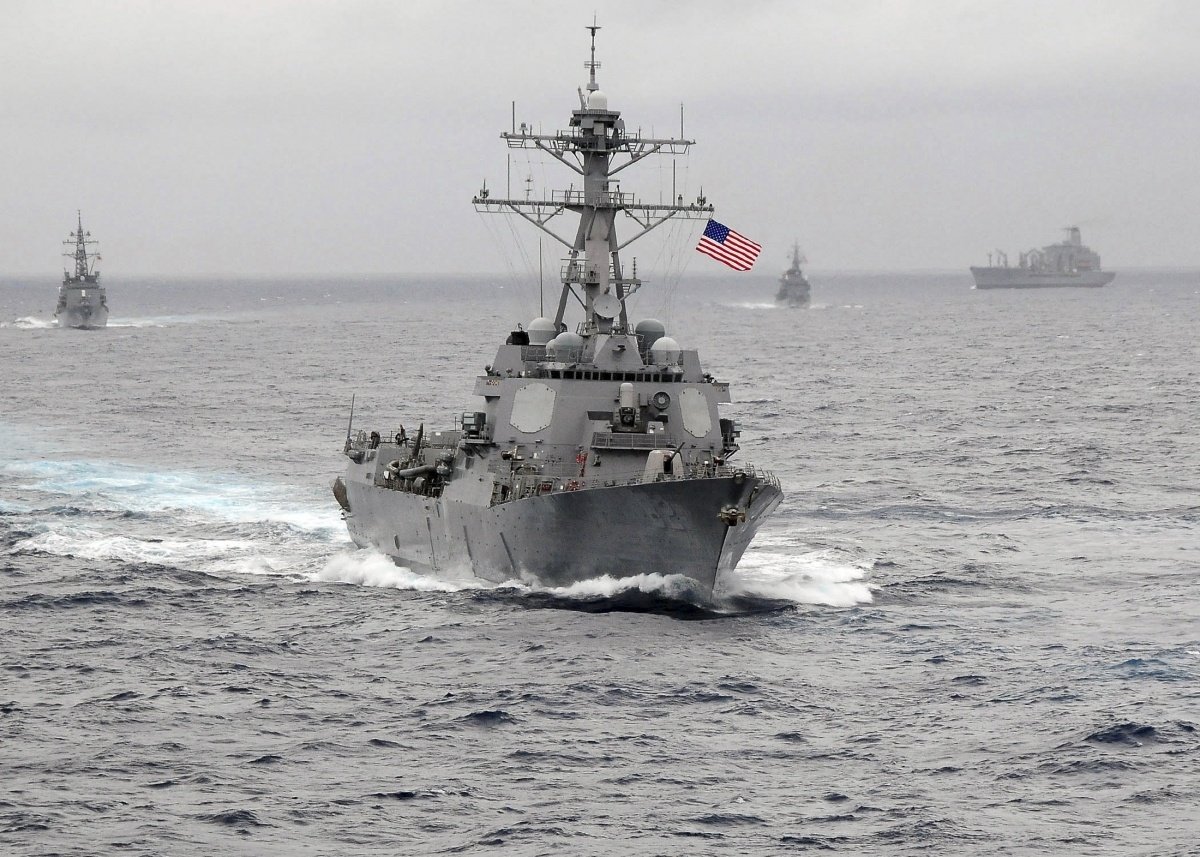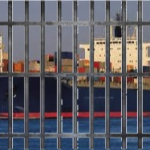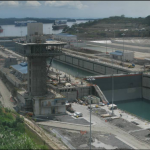Are Shipments in Danger as US, China Tensions Rise in South China Sea?
 About $5 trillion of cargo a year is shipped through the major shipping lanes that go through the South China Sea. A good portion of that is trade between the U.S. and China. Escalating tension between China and the U.S. over actions in the South China Sea have shippers worried that international trade between the countries could be affected.
About $5 trillion of cargo a year is shipped through the major shipping lanes that go through the South China Sea. A good portion of that is trade between the U.S. and China. Escalating tension between China and the U.S. over actions in the South China Sea have shippers worried that international trade between the countries could be affected.
Washington just sent a warship through disputed waters in the South China Sea and Beijing is angry.
The USS Lassen, a guided-missile destroyer, passed within 12 nautical miles (22 kilometers) of an artificial island built by Beijing in the South China Sea.
“We are asserting the principle of global commons,” Robert Daly, director of the Kissinger Institute on China and the United States, told DW. “These are international waters despite China’s very strong suggestions otherwise.”
The Chinese Foreign Ministry accused the USS Lassen of “illegally” entering the waters off the island, named Subi Reef, and called the maneuver a “deliberate provocation.” A Chinese guided-missile destroyer and naval patrol ship tracked the US warship. Beijing summoned the US ambassador.
While tension in the South China Sea is by no means a new thing, tensions there have been especially high for some time as China, Vietnam, and the Philippines have been clashing over claims to parts of the waters. And Brunei, Malaysia, and Taiwan also have claims over part of the sea.
May of last year, I blogged a summary of the South China Sea tensions that have shippers worried.
China actually has a claim on most of the South China Sea, and has been building the country’s territorial claim muscles in the water by building islands, including the artificial one of which the USS Lassen passed within 12 nautical miles.
The islands China built in the South China Sea come complete with airstrips and deep water ports. There is worry that China, despite statements to the contrary, plan military uses for the islands.
Washington sending a warship through the South China Sea so close to Subi Reef was the U.S. flexing some muscle of its own and saying to China that part of the sea it has claimed is international water.
The DW article states Washington’s stance:
“We have never said China has done anything illegal,” Daly told DW, describing the US position on building the islands. “We have only said that anything built on a low-tide rock or reef that is underwater much of the time, it does not cast a territorial sea.”
International Business Times reports China’s response well:
Vice Foreign Minister Zhang Yesui called the patrol, which took place on Tuesday morning local time, “extremely irresponsible” and demanded that the U.S. immediately stop infringing on Chinese sovereignty and security interests in the region.
Chinese authorities said they had monitored the progress of the destroyer USS Lassen as it made its way toward the disputed waters, describing the actions as “illegal” and urged Washington, D.C., to “immediately correct its mistake.”
But the U.S. does not plan on this being a singular event.
This move by the U.S., which is supposed to be just the beginning of many such warship voyages through the contested waters, could stir up serious conflict in the South China Sea. There have been incidents in the South China Sea between China and the other countries with claims to the water.
Vietnam and the Philippines feel like they gained strength in their disputes with China now that the U.S. is getting more involved.
DW reports:
On Tuesday, the Philippines expressed support for the US move, calling it a restoration of the “balance of power.”
“The Philippines has a mutual defense treaty with the United States and Vietnam has also warmed up its military relations with the United States,” Vincent Wei-cheng Wang, an expert on Chinese foreign policy at the University of Richmond, told DW.
“They hope that by enlisting the United States in this bilateral situation with China that it can bolster their position,” Wang said.
The article goes on to explain China’s perspective, revealing high motivation for China to defend their claim on the waters of the South China Sea:
The dispute is about more than small islands. Thirty percent of global trade moves through the South China Sea’s shipping lanes, including Middle Eastern oil vital to the Chinese economy.
“China is very concerned that if a hostile external maritime power controls the waterway and decides to choke off the Chinese shipment, then China’s economic development may grind to a halt,” Wang said.
In this context, Beijing views the US naval presence as a potential threat to its national security, according to [Yun Sun, an expert on Chinese foreign policy at the Stimson Center].
“They don’t want the Americans to be there,” Sun said. “With these artificial islands, they are successfully pushing the Americans further out from China’s mainland.”
In the middle of all this tension are shippers’ imports and exports. Will all those products that say Made in China keep getting to the U.S.? Is there a chance Made in America exports won’t be able to get through the South China Sea?
Both the U.S. and China have vested interest in keeping international shipping moving through the South China Sea. And that does play a role in the building tension. Things would have to escalate much higher to interrupt trade between the U.S. and China, so for now, shippers shouldn’t worry too much. For now.
Of course, at Universal Cargo we’ll be keeping an eye on the news coming out of the South China Sea, and even more so, on how the shipping lanes are flowing there.
![]()
Source: UC Blog




